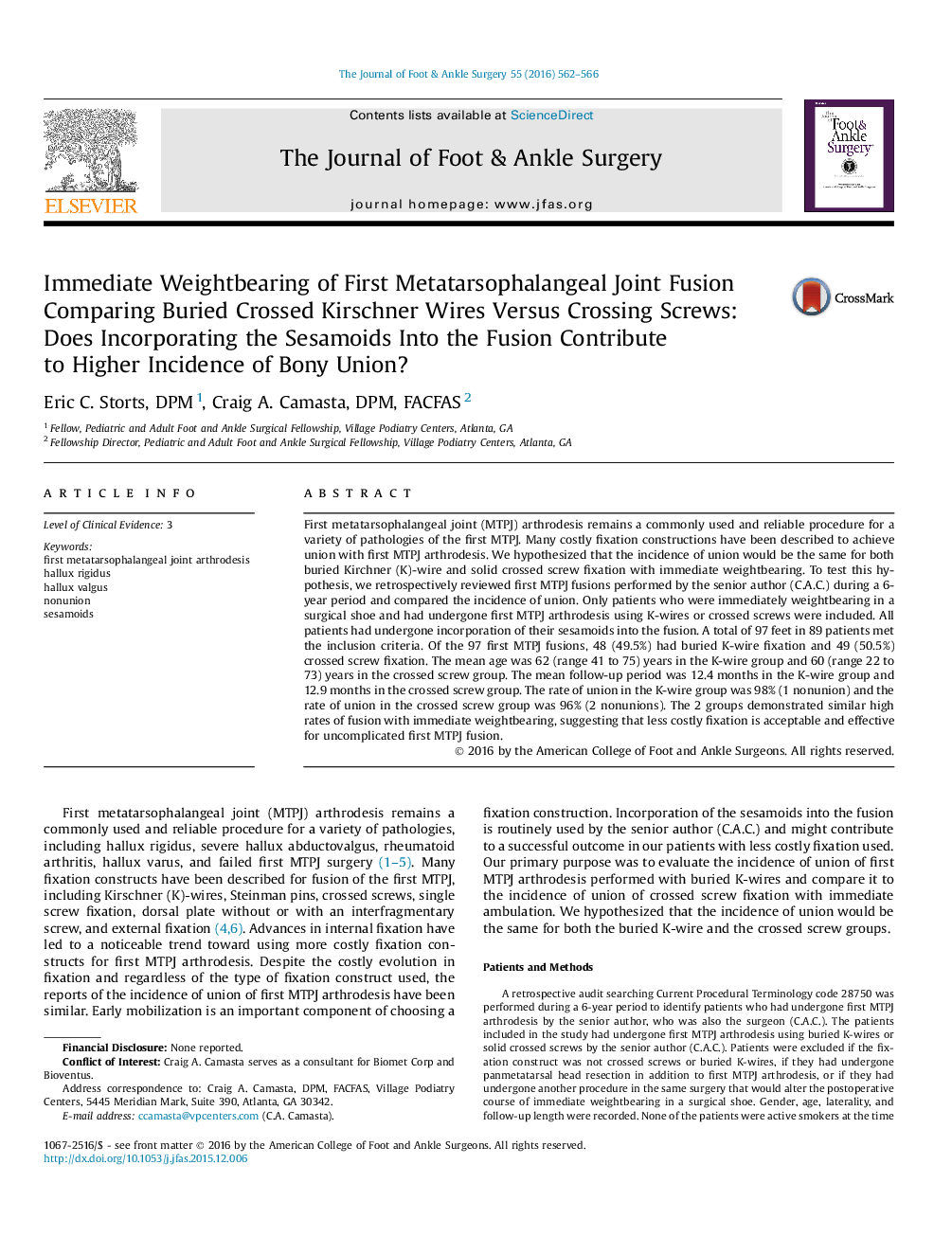| Article ID | Journal | Published Year | Pages | File Type |
|---|---|---|---|---|
| 2715172 | The Journal of Foot and Ankle Surgery | 2016 | 5 Pages |
First metatarsophalangeal joint (MTPJ) arthrodesis remains a commonly used and reliable procedure for a variety of pathologies of the first MTPJ. Many costly fixation constructions have been described to achieve union with first MTPJ arthrodesis. We hypothesized that the incidence of union would be the same for both buried Kirchner (K)-wire and solid crossed screw fixation with immediate weightbearing. To test this hypothesis, we retrospectively reviewed first MTPJ fusions performed by the senior author (C.A.C.) during a 6-year period and compared the incidence of union. Only patients who were immediately weightbearing in a surgical shoe and had undergone first MTPJ arthrodesis using K-wires or crossed screws were included. All patients had undergone incorporation of their sesamoids into the fusion. A total of 97 feet in 89 patients met the inclusion criteria. Of the 97 first MTPJ fusions, 48 (49.5%) had buried K-wire fixation and 49 (50.5%) crossed screw fixation. The mean age was 62 (range 41 to 75) years in the K-wire group and 60 (range 22 to 73) years in the crossed screw group. The mean follow-up period was 12.4 months in the K-wire group and 12.9 months in the crossed screw group. The rate of union in the K-wire group was 98% (1 nonunion) and the rate of union in the crossed screw group was 96% (2 nonunions). The 2 groups demonstrated similar high rates of fusion with immediate weightbearing, suggesting that less costly fixation is acceptable and effective for uncomplicated first MTPJ fusion.
